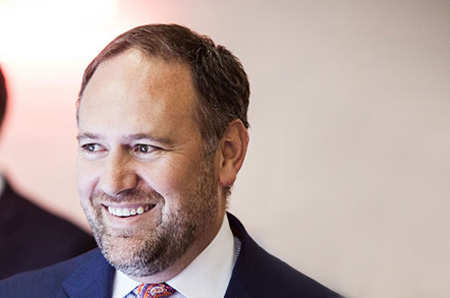
David Leppan, founder of Billionaire.com
Katharine Markley: What was your inspiration behind starting
Billionaire.com? How did this project come about?
David Leppan: With Billionaire.com, we set out to create a luxury lifestyle publication with philanthropy at its very heart. Our aim was to influence new wealth to think about making charity part of their spending. We equally wanted to showcase artisans, craftsmen, and artists, and by so doing, expose the ultra-high-net-worth community to these truly remarkable products and offerings. I’m delighted we’ve received such traction in such a short space of time.
KM: Following global economic slowdowns in the past five years, have you seen any significant changes in how and where UHNW individuals are spending their money? Have you seen a trend toward investing more heavily in alternative assets?
DL: There has indeed been a paradigm change in the investment patterns of the ultra-wealthy since the global financial crisis. Up until recently, many were risk averse, steering clear of anything but the most basic of products, and hiking their exposure to cash and tangible assets, including real estate, gold, and luxury assets like art and wine. As the global economy has picked up in the last 18 months, so has investor appetite for yield, and accordingly, higher-risk products are back in vogue. But it is very much a case of ‘gone but not forgotten,’ and many investors are more demanding, hands-on, and focused on value-for-money than they were before. Increasingly, they are doing deals themselves through private equity and angel investment, rather than pay fees to a private banker or fund manager.
KM: You are tuned in to where people are spending their money in luxury markets—any thoughts on the next big trend?
DL: Asia is the fastest growing market for the luxury goods industry, but brands must remain nimble to stay ahead of changing tastes. A shift is afoot. The Asian luxury consumer is frequently younger and more savvy and price-conscious. They are looking for rare, quality materials and bespoke items and tailoring, and many brands like Louis Vuitton, Gucci, and Tod’s are building this into their offering now.
KM: You have a diverse art collection—you collect
Old Masters and, in particular, Spanish, Italian, and Dutch 16th- and 17th-century art. Can you talk a little bit about how you started collecting art, and how your tastes developed as your collection grew?
DL: I suspect it was when I first truly came to understand and appreciate the mastery of
Diego Velazquez (Spanish, 1599–1660) that my interested piqued. It was surprising to me to find out that one could acquire art from this period in auction rooms across Europe and the United States. As I added pieces to the collection, I found one becomes more selective and one’s eye improves. There are pieces I bought early that are wonderful, and equally, there are others that are poor and show how immature I was as a collector.
KM: What was the first piece you purchased in your collection? Do you have a favorite work?
DL: The first important pieces acquired were slightly reduced versions of Velazquez’s hunting portraits of Felipe IV and his brother. The quality varies across the two portraits, from areas that are clearly studio to parts that, at worst, must have been painted by
Juan Bautista Martinez del Mazo (Spanish, 1612–1667), his highly talented son-in-law, and at best, may have the brushstroke of the master himself. Choosing a favorite in a collection is like being asked to choose a favorite amongst your children. It’s simply impossible.
KM: A personal mission you hold close to your heart is to abolish extreme poverty through philanthropic and charitable endeavors. Is there one organization in particular you are extremely passionate about?
DL: I’m passionate about life, and if there is an organization I hold particularly dear it’s Happy Hearts, a charity set up by the truly wonderful Petra Nemcova, herself a survivor of the Asian tsunami.
KM: Any final words of wisdom?
DL: At 40 I hardly feel I should have ‘words of wisdom,’ however, what I would say is surround yourself with great human beings—they are priceless. Do whatever you do with passion. And if you can’t, then you’re doing the wrong thing, in which case, be bold and strong, and change course!


